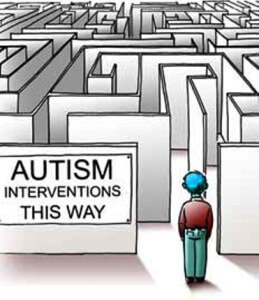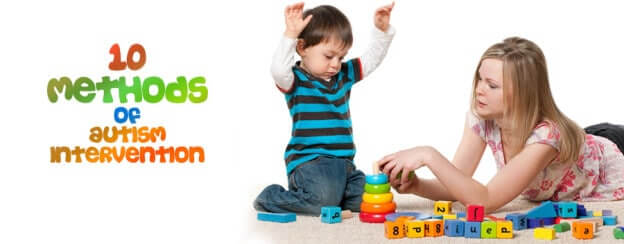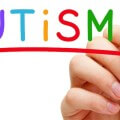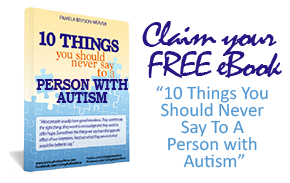 There is no doubt that early intervention can best deliver progress and results to children living in the shadows of Autism Spectrum Disorders and other developmental disorders. Autism Spectrum Disorders, or ASD, have a variety of treatments and therapies duly called “intervention” by experts.
There is no doubt that early intervention can best deliver progress and results to children living in the shadows of Autism Spectrum Disorders and other developmental disorders. Autism Spectrum Disorders, or ASD, have a variety of treatments and therapies duly called “intervention” by experts.
It is important to understand that one intervention method can work for a child with autism but may not work with another. This is because each spectrum in ASDs is unique from each other. Any of these can overlap one another but, all the same, the effect can vary from child to child.
To understand about how Autism Spectrum Disorders are usually treated, here are some broad categories usually used for interventions. These are random ones picked from various resources. Treatment for ASD can be comprehensive and intensive, and research is still ongoing on various treatments, likely causes, and other factors which could aid in completing the puzzle. So, if you know another method, feel free to comment at the bottom of the page.
1. Standard Healthcare Services
Designed primarily to maintain good health and well-being of children with autism, these include wide-ranging “conventional” (widely-accepted) treatments, therapies and/or interventions carried out by health care professionals such as doctors, occupational and physical therapists, psychologists, speech-language therapists, and many more. A variety of approaches and methods are usually combined on these services. For example, an ABA expert working with a speech pathologist and occupational therapists to provide complete intervention to a child or adult with autism.
2. Complementary/Alternative Medicine
Let’s point out the difference. Complementary medicine usually works together with standard healthcare services while alternative medicine works in place of conventional techniques. Paediatricians with background on autism can work alongside speech therapists or a chiropractor when engaging in complementary medicine intervention. Alternative medicine, on the other hand, is the type of intervention that replaces standard healthcare services. Naturopaths, for instance, can work singlehandedly in “correcting” chemical imbalance on an individual-with-autism’s body.
3. Developmental and Behavioral Interventions
These intervention techniques revolve on teaching and coaching. Behavioral therapies are customarily designed to promote appropriate or independent behavior and inhibit unsuitable behavior. Desired behavior is usually broken down into specific tasks taught in a structured manner.
On the other hand, developmental interventions are aimed at a child’s core deficits. Therapists and parents as well as special education teachers work together in engaging a child’s own interest to enhance communication, affection, social interaction, logical reasoning, and so on.
4. Psychotherapy
Psychotherapeutic intervention is a range of treatments with one or more processes that completely allow an individual with autism to fully comprehend his abilities and challenges. Counseling is one form of psychotherapy which can take many forms. It can be just plain “talking” with a therapist his innermost thoughts while others engage in counseling through creative art form like music or dance. Some counseling are done to improve speech/communication, and social interaction.
5. Medications
Widely known as medicines or pharmaceutical drugs, this type of intervention is usually prescribed to cure or treat a medical diagnosis. They are sometimes classified according to their chemical properties, therapeutic effects, mode of administration, and so on. Some medicines are also used nutritional supplements.
6. Biomedical’ Interventions
Biomedical means the application of biological/physiological sciences to clinical medicine. Though this could mean a lot of things to different people, most individuals living with autism know that this refers to a set of interventions designed to stop or reduce biomedical issues that usually trigger or worsen symptoms and issues faced by those living in the spectrum. Though often considered as part of complementary or alternative medicine, this group of intervention is usually more specific. Some examples of biomedical intervention includes the GFCF diet (strict enforcement), use of nutritional supplements and hormones, hyperbaric oxygen therapy, chelation, and so on.
7. Motor/Sensory Interventions
Treatments and therapies falling on this category usually aim to improve movement of body parts (motor skills) and heighten sensitivity to one or more senses(sensory perception) to an individual with autism.
8. Alternative and Augmentative Communication
Communication is one of the most highly affected skills in individuals with autism. Alternative communication is usually a set of therapies used to enhance speech and/or language without using the conventional technique. Augmentative Communication, on the other hand, is designed to enhance and complement standard technique in communication therapies.
9. Assistive and Adaptive Technology
In today’s age of technology, the use of assistive and adaptive technology is nothing new. This type of intervention usually makes use of low-tech, mid-tech or high-tech devices, products, and equipment aimed at maintaining, augmenting or improving functional capabilities of those living with ASD. Low-tech gadgets examples are clipboards, photo albums, dry erase boards, etc. Mid-tech examples are Language Master, calculators, voice output devices, and so on. Typically costly, high-tech gadgets such as computers, videocams, and complex voice output devices are more commonly used today.
10. Service-Based Interventions
This intervention category is broken down into three subcategories namely, educational services, employment services, and social care services. Educational services for individuals on autism are focused on the education and mental development of individuals with autism. Employment services are designed to make people find and keep job suited to their abilities. Social care services, on the other hand, are designed to assess the needs and provide support therewith to individuals in a community. This usually includes, residential care, social groups, and so on.
There are also other interventions that do not fall on any of the categories mentioned. Examples are animal therapies, relationship-based intervention, and the use of politics and PR. Indeed, autism is a complex condition that requires various intervention methods. In all these, however, the earlier the intervention usually means the better the progress.






One thought on “10 Methods of Autism Intervention”